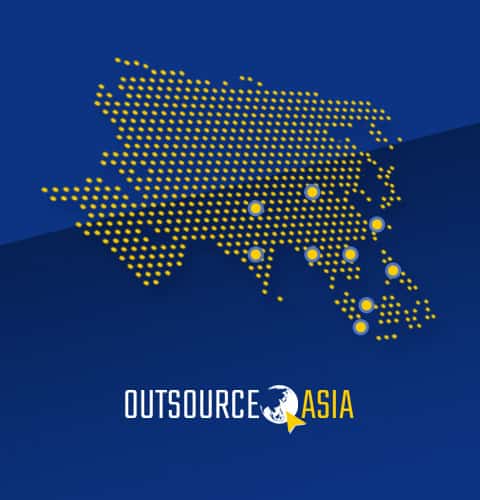
Setting Goals and Trends for Outsourcing in 2024
Organizations optimize operations, decrease costs, and survive in an ever-shifting business landscape through outsourcing, a cornerstone of strategic decision-making. However, companies must recognize that the landscape of outsourcing is constantly changing as they venture into the future. While some outsourcing patterns from this year will persist into 2024, others will undergo significant changes.
The outsourcing landscape is constantly changing due to technological advancements, changes in consumer behavior, and global market dynamics. Here’s what to expect for 2024 (and how to best prepare).
Forecasting Outsourcing Practices for the Year 2024
Trends come and go, but there are a lot of constants in every industry. While some outsourcing tendencies have persisted for some time, 2023 was also be replete with brand new developments.
While some of them didn’t last long, many will be around in 2024 and beyond. So, let’s have a chat about the patterns that we saw in 2023 and how they’ll impact our work in the future.
1. The Cloud Is Where It’s At: Cloud-Based Outsourcing
The move to cloud-based solutions is one of the most revolutionary developments in outsourcing. In addition to helping with cost reduction, cloud-based outsourcing also provides scalability, flexibility, and accessibility. Businesses may now facilitate remote work and worldwide collaboration by granting access to their data and applications through the cloud.
The flexibility of cloud-based outsourcing to work with different business processes is its greatest strength. With the cloud, businesses can outsource the technical complexities of application hosting, data management, and data protection to specialists, freeing them to concentrate on their core capabilities.
2. Robotic Process Automation (RPA) and Other Similar Technologies
The use of software robots to automate routine procedures is known as robotic process automation (RPA). The uniformity and accuracy with which these robots’ function is unparalleled, and they work nonstop.
Streamlined operations aren’t the only advantage of RPA. Automating routine processes allows businesses to reallocate human capital to higher-value endeavors. Operations that rely heavily on data entry, customer support, and transaction processing are ideal candidates for RPA.
3. AI-Enabled Outsourcing
The rise of AI is changing the face of outsourcing. Solutions driven by AI can sift through mountains of data, draw insightful conclusions, and even make decisions based on that analysis. In customer support, AI chatbots can communicate with clients around the clock, providing them with fast and tailored replies.
Organizations can gain a better understanding of customer behavior, optimize marketing strategies, and increase product development with data analytics powered by AI. The use of AI in outsourcing is only going to grow in the future, as the technology provides cutting-edge answers to increasingly complicated problems.
4. Realizing Customer Expectations with Data-Driven Service
Customer service is just another part of a data-driven world. For businesses that want to wow their customers, data-driven customer care is the new norm. Businesses can learn more about their customers’ likes and dislikes, provide more relevant suggestions, and anticipate their requirements by studying consumer data.
Through outsourcing, customer service providers that are data-driven can collect, evaluate, and use client insights to give outstanding service. Maximizing operating costs while simultaneously increasing customer pleasure and loyalty is the end outcome.
Where Do You See Outsourcing Going from Here?
Looking ahead, we have a lot of questions. In the years to come, what will the most effective and efficient forms of outsourcing be? Considering these developments, how can businesses ensure they remain competitive? Let’s look at a few new developments that could change the outsourcing industry:
- Niche Specialization: Outsourcing companies are branching out to meet the unique demands of certain industries and types of businesses. As a result of this trend, businesses can connect with partners who have extensive knowledge in their specific fields, which guarantees tailored solutions.
- Hybrid Workforce: The idea of a hybrid workforce, which includes both human and AI-powered components, is becoming more popular. Businesses can take advantage of both human workers’ empathy and the speed and efficiency of automation with this technique.
- Data Security: Concerns about data security and privacy will remain top priorities when it comes to outsourcing, especially with the increasing frequency of data breaches. Businesses will expect their outsourcing partners to adhere to legislation, have strong security measures, and be transparent.
- IT Outsourcing Revival: IT outsourcing, which has been an integral part of company plans for a long time, is seeing a comeback. Software development, cybersecurity, and IT infrastructure management are becoming increasingly difficult areas; hence firms are seeking out expert IT outsourcing partners.
- Sustainable Outsourcing: An increasingly crucial factor in outsourcing decisions is the need to minimize negative impacts on the environment. To achieve their CSR objectives, more and more companies are looking for business partners that share their commitment to environmental sustainability.
Setting Goals and Outsourcing
Making sure everyone is on the same page and recognizes the same goal requires clearly outlining your success measures. It’s essential to set SMART goals and establish criteria for evaluation. This allows you to measure if outsourcing is essential and to track the value and return on investment (ROI).
Questions to Ask When Setting Goals and Objectives
1. Discover Particular Requirements
It is unrealistic to expect all pharmacies to have the same exacting requirements. It is crucial to think about your company and its unique requirements because what helps one company won’t help another.
When trying to pinpoint precise requirements, it can be helpful to consider the areas in which your company is now experiencing difficulties and for which there are currently no obvious answers.
2. Define Your Objectives
All companies have common objectives like increasing efficiency, reducing costs or increasing sales. But “increase sales” is just too broad of an objective.
Define your objective with a timeframe and measurable outcome – to increase revenue by 5% by Q3.
It will be much easier to make sure everyone is on the same page and has acceptable expectations if you set explicit targets.
Setting objectives is important for several reasons, one of which is that they can be useful for assessing your progress. If you’re on the market for a new outsourcing partner, pitch your vision to prospective candidates; they can then tell you if they think they can make it a reality.
While most objectives will have a numerical value, such cutting expenses by a specific percentage, this is not always the case. Raising the bar for customer service is one such example. There aren’t always hard and fast numbers that say how to improve customer service, but there are ways to get a feel for it.
3. Get Your Goals in Order
There are several goals! It is normal for certain objectives to take precedence over others.
Put one goal ahead of the others and devise a system to keep tabs on its progress if it’s more essential to you than the others. Prioritizing your goals requires open communication with your team so that everyone is working toward the same end.
It is not always easy to choose which goals should take precedence. Compliance is critical to running your company legally and safely, which is why we hold it in the highest regard. This might be an excellent place to start looking for an outside vendor if your internal team isn’t dedicated to maintaining compliance or doesn’t fully understand all the rules and regulations in effect.
You may increase client retention, promote community word of mouth, and meet all your clients’ needs with an improved service if you emphasize customer service.
4. Clear and Quantifiable Goals
Setting measurable objectives is essential; we’ve discussed this before. Motivate yourself, monitor your progress, and make sure you’re on the right road to success by setting measurable goals.
If you’re stuck trying to produce a quantifiable goal, deciding on a reasonable deadline is a good place to start.
Outsource for Growth in 2024
When you initially decide to outsource, it might be difficult to know what to do. To help ease that anxiety, it’s a good idea to set specific, quantifiable goals.
Outsourcing will only grow in 2024 and beyond. From retail sales to financial services to travel and tourism, outsourcing is one of the most effective ways to grow your business next year.
As we reflect on how the year has been for our respective businesses and begin gearing up for 2024, it’s the perfect time to explore potential outsourcing opportunities that can help take your organization to the next level.
If you need help in finding the right outsourcing partner, book a FREE APPOINTMENT with Outsource Asia experts today.

